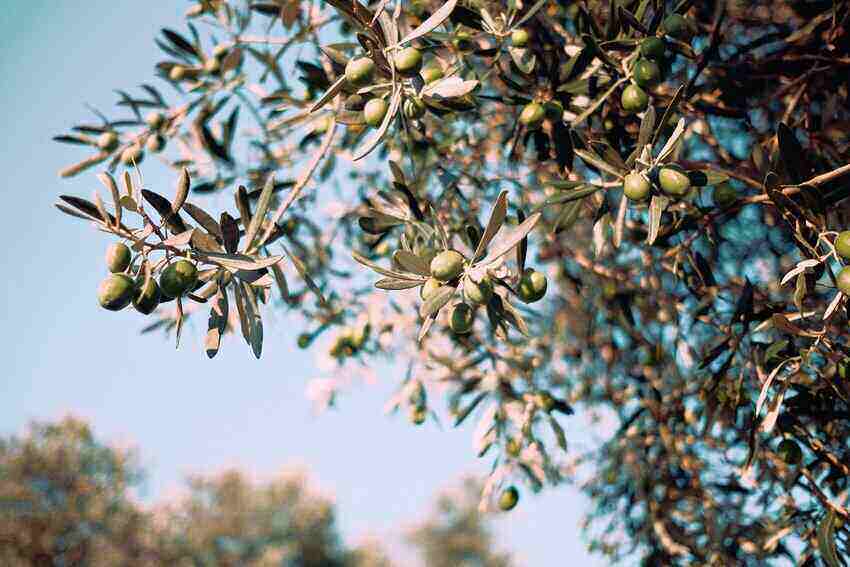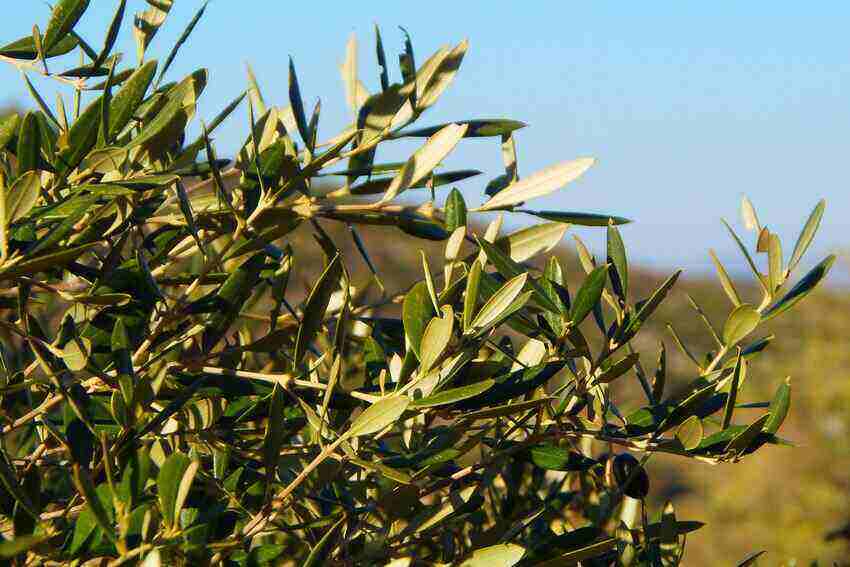Olive trees are evergreen plants and bloom in the summer when the soil is well-drained. The most important fact about the plant is it won’t drop leaves but will renew the leaves in winter. But, whenever your plant is dropping the leaves, not as alarming as the leaves of a lily turning yellow, that might be an alarming sign.
So, you may wonder why do olive trees lose their leaves? Olive trees drop their leaves for various causes, some of which are inevitable, but most of them are the result of poor care or ignorance like the leaves of the apple tree becoming red.
No worries, you’re at the right place if your plant is losing its leaves. Here, we’ll talk about the causes of olive leaves falling and how to fix them in detail. Let’s get started.
So, Why Do Olive Trees Lose Their Leaves and How to Fix These?

Firstly, Do Olive Trees Lose Their Leaves?
Olive trees are evergreen thus they don’t drop leaves due to seasonal change. But, when they regenerate new leaves, foliage dropping may be seen. There are also some other reasons that might provoke olive tree leaves to lose.
Infection of fungi, improper watering, and inadequate lighting are some of the few reasons for olive foilage fallings. In the following section, we’ll explain several reasons for which olive leaves may fall off and how can you get rid of them.
Now, Why Are My Olive Trees Losing Their Leaves?
Olive trees do lose their leaves if there’re any severe issues. So, here’re some causes that might affect the tree, thus losing its leaves.
1. Dehydration
Dehydration is a rampant cause of leaf drops in olive trees. If you do not provide the developing plant with an adequate amount of water, it will eventually drop its leaves and might be a reason for dying.
If the leaves on your trees are turning yellow and drying up before dropping off, it is quite easy to determine whether or not they are suffering from a lack of water.
The death of olive trees is often brought on by a lack of water, which is why it is essential to have a solid grasp of the water needs of your tree and to provide it with the appropriate quantity of moisture.
2. Less Light and Transition Shock
Taking your potted olive tree out of the sunshine and into a dimmer area might cause a dramatic decline in the tree’s foliage. Olive trees are sluggish to adapt to environmental changes.
Falling olive leaves, therefore, are a sure sign that your tree isn’t receiving enough sunlight. Keep your olive tree in a place that receives the most sunlight in order to meet its natural requirements.
Your olive tree may drop some old leaves while it adapts to your home setting, for example, if it was just acquired and put in a greenhouse full of sunshine. Make no fuss about it; it will quickly reseed itself.
The stress of moving from the outside to the interior may also cause olive trees to shed their leaves quickly. Because leaves mature in a specific atmosphere, their light-utilization efficiency is already predetermined. As a consequence, the leaves begin to drop since they are unable to withstand the diminished light.
However, temperature and light inconsistencies affect the trees’ transpiration, resulting in leaf drop problems.
3. Infection by Fungi
An olive tree with dark and falling leaves caused by a fungus is a more challenging issue. Occasionally, Verticillium wilt, a soil-borne fungus, may infect olive trees. A fungus may enter the tree from the roots and spread throughout the whole plant, resulting in death. Thus, fresh growth may be stunted, and the branches may begin to decay.
Sadly, this fungal condition cannot be cured at once. If the illness does not control, the olive tree will perish. As a result, the tree’s ability to produce fruit is likewise compromised. Pruning, watering, and fertilizing are the best ways to keep the tree healthy and extend its lifespan.
4. Too Much Temperature and Stress
In general, olive trees love to live in a temperature range of 80 to 90 degrees Fahrenheit (26 to 32 degrees Celsius). Olive trees may fall into dormancy if the temperature is above or below this range for an extended period of time. After a transplant, olive trees might suffer from stress, particularly if their roots were injured.
They might initially lose fruit and blooms, then leaves as a sign of stress. Check to determine whether your olive tree is getting enough sunshine, water, and nutrients if it’s under stress and not recovering as you’d want.
A healthy olive tree can thrive if these conditions are satisfied. Nonetheless, be patient as this could take many months before you notice any progress in recuperation.
5. Rotten Roots
Overwatering, which may be caused by inconsistent and improper watering, can result in difficulties such as rotted roots and cause the olive tree to lose its leaves. It is possible for this to happen if the ground is constantly saturated with water and there is insufficient drainage for the water to escape.
Olive trees are susceptible to having their roots decay when they are submerged in water for lengthy periods of time because this causes the roots to stop functioning as a source of nutrition for the plant.
Remove some of the dirt from the uppermost part of the root to determine whether or not it is decaying. If the roots are already brown or black, this indicates that the plant has passed away and cannot be revived (check this cordyline plant revival process). Remove the heads.
You may prevent rotting roots by installing a drainage system that allows water to flow away from the soil after it has been moistened and by developing healthy watering practices.
6. Natural Developmental Stage
It is important to keep in mind that olive trees may lose their leaves as the temperature drops. This indicates that you need not worry too much about the fact that the leaves on your trees are falling off throughout the winter since new leaves will come back during the spring.
Keep in mind that it is normal for olive trees to lose their leaves once a year and that this tendency is exacerbated when the trees are grown in cooler climates.
Finally, How To Prevent Olive Tree Leaves Dropping Problems?

After knowing the causes, now it’s time to know how you can fix the problems. Some ways to prevent these problems are given below:
1. Examine The Roots Regularly
To determine whether the plant is unhealthy or not, examine the roots very frequently. You may even need to modify the potting mix if necessary. Gently loosen the dirt around the plant before removing it from the container.
Moreover, when you remove the olive plant from the pot, try not to damage the root by doing unnecessary things. By looking at the color of the roots, you can tell whether they are damaged or unhealthy. Nevertheless, smells and maggots might be attracted to roots that have been damaged.
Pruning and flowing water should be applied to the whole root system after removing any damaged roots. Not to mention, olive trees should be moved to a fresh container and potting mix after the root system has dried up.
So, before transferring the plant, you may add some soil amendment goods to the container.
2. Adequate Lighting
When it comes to olive trees in particular, they may make use of all the light they can get. With olive trees, you don’t have to worry about shielding your plants from the glare of the afternoon sun. Olive trees need at least six hours of direct sunshine a day in order to thrive.
The solution may be as simple as positioning your trees to face south on your property. However, a grow lamp may be used to keep young olive trees alive during the winter months. Even if you’re growing your olive trees under grow lights, they’ll still benefit from exposure to direct sunlight.
3. Proper Watering
Many problems of olive trees can be solved by proper watering. So the ideal method of watering is to leave at least two to three inches of soil dry.
Although olive trees need frequent waterings, their soil should never be constantly saturated. You may need to water your olive trees once or twice a week, depending on how old they are and how big the pot is.
FAQs Regarding Olive Tree Leaves Falling
Do olive trees lose their leaves in winter?
Unlike other trees, olive plants are evergreen and do not drop foliage during winter. Every 6 to 14 months, evergreen trees regenerate their leaves by gradually dropping the old ones and producing new ones.
Do olive tree leaves capable of regrowing?
A healthy olive tree will develop if you take care of it regularly and offer it the right amount of sunshine, water, and nutrients.
What are the telltale indicators of an olive tree dying?
There are several indicators that an olive tree is in decline. It’s a good indicator if there’re no or fewer leaves on all or a portion of the tree. Additionally, a tree’s bark may become brittle and break off, its limbs die and fall off, or its trunk becomes brittle or spongy.
So, What is the Conclusion Here?
So, do olive trees lose their leaves? As mentioned, there might be several reasons why the olive tree loses its foliage such as improper watering, insufficient light, high temperature, fungal infection, rotten roots, natural development reasons, etc.
But whatever the reason is, before doing anything examining the root is the first step. After finding the reason, you can do the steps to solve the problem either by proper watering or introducing adequate lighting systems.
Lastly, the more care you give your olive tree, the more fruit it will provide for you to eat. Take proper care of it so that you may get the benefits of a larger crop of olives from it.

I’m Shofi, a passionate gardener and blogger. I have 10+ years of experience in gardening and hold certifications in horticulture and garden design. I share my knowledge and skills through my garden blog to inspire and educate others on the joys of gardening. I try to provide valuable information and create a community for gardeners of all levels to connect and learn. My ultimate goal is to inspire others to start their own gardens and connect with nature.

Hi We have an olive tree which was about 7 years old and the roots started to damage the wall so had to be moved.
We planted it in a pot and did all the things it needed but it lost all its leaves and has been like that for nearly a year now.
It’s branch and stems are still alive as they are green inside.
Will it ever grow leaves ??
Hard to tell as it was 7 years old tree. It may take some time though if it returns to its previous condition.
Hey! doing research on the olive tree and fallen olives that coat the grass and if this is a common problem? what to do or should be done to stop lawn damage. i know spray the tree blossoms but HOA does not do this!